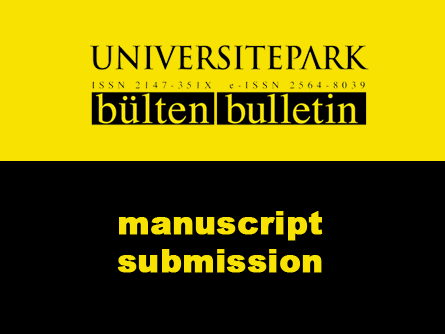| 1 |
Contributing and Hindering Factors of Teachers’ Social and Emotional Learning Competencies pp. 7-22 | Published Online: December 2023 | DOI: 10.22521/unibulletin.2023.122.1 Arlyn A. Pasco, Ruth A. Ortega-Dela Cruz
Abstract Background/purpose – Teachers are the role models that students tend to imitate. Therefore, teachers’ social and emotional learning skills and competencies are crucial to the implementation of social and emotional learning (SEL) intervention programs. When teachers are under stress, their social and emotional well-being can be significantly affected. This study focuses on assessing the SEL competencies of teachers, and to identify the hindering and contributing factors of these competencies. Materials/methods – Survey research design was used to collect the study’s data. This was a combination of the an adopted 3-point, Likert-type instrument called the Collaborative for Academic, Social, and Emotional Learning (CASEL) Scale, which is a self-reflection test, and a structured questionnaire. Results – The assessment revealed that most respondents had a deep understanding of their SEL competencies and applied them in their daily lives. The result also revealed “stress” as the primary hindering factor towards teachers achieving their SEL competencies. Conclusion – The results serve as the basis for formulating a SEL intervention program aimed at enhancing and developing the SEL competencies of teachers. Keywords: competencies, social and emotional learning, stress, teachers |
|
| 2 |
Crafting Future Leaders: Soft Skills Development for Workforce Readiness in Moroccan Higher Education: An In-depth Exploration via Post-Intervention Qualitative Feedback pp. 23-54 | Published Online: December 2023 | DOI: 10.22521/unibulletin.2023.122.2 Mohammed El Messaoudi, Smail Kerouad, Mustapha Fagroud
Abstract Background/purpose – This qualitative study marks the third phase of a comprehensive multiphase, mixed-methods research endeavor consisting of three interdependent phases. Positioned within this larger framework, the current study aimed to solicit post-course qualitative feedback pertaining to a specialized soft skills development training program, delivered through a blended learning model. Materials/methods – Specifically, this phase focuses on post-course qualitative feedback pertaining to a transformative soft skills development training, administered through a blended learning model. Employing a rigorous protocol, data were collected through focus group interviews using a Voice Tracer. The data were meticulously managed and subjected to thematic analysis using NVivo software. Results – The participants consistently acknowledged the training compelling nature, empowering essence, and notable influence on their soft skills development. The results of this study hold significant implications for Moroccan policymakers, curriculum designers, educators, and researchers. Conclusion – The insights gained from this research endeavor provide valuable guidance for addressing the soft skills gap, enhancing the readiness of university graduates for the contemporary workplace, and establishing a robust connection between academia and the dynamic realm of business. Keywords: Focus group interviews, NVivo, thematic analysis, soft skills development |
|
| 3 |
Classroom Climate in Early Childhood Education: A Conceptual Framework for Effective Classroom Management pp. 55-82 | Published Online: December 2023 | DOI: 10.22521/unibulletin.2023.122.3 Nurcihan Aslan
Abstract
Keywords: preschool education, classroom climate, classroom management, early childhood education |
|
| 4 |
Teachers’ Effective Use of Educational Resources and Their Effect on Students’ Learning pp. 83-98 | Published Online: December 2023 | DOI: 10.22521/unibulletin.2023.122.4 Jacob Kola Aina, Azeez Adebayo Abdulwasiu
Abstract Purpose/Background – Numerous educational resources are accessible in the 21st century that may be used to help students learn. These materials must therefore be investigated by teachers, and instructors need to be resourceful in order to improve students’ learning in the 21st century. This study presents information and ideas on the traits, skills, and effects of resourceful teachers on how students learn. Materials/Method – In this review, the author consulted literature and empirical data from the most recent scholarly works, including edited books, peer-reviewed journal articles, and other academic research. Practical Implications – Any educational institution would benefit greatly from recruiting resourceful teachers. Today’s teachers need to be resourceful in many different ways, such as being able to work constructively and collaboratively with others, and to make use of appropriate technology, including the latest free and open-source Internet resources. Students’ academic performance, retention, motivation, and other aspects are assumed to be influenced by a teacher’s resourcefulness, among other things. Conclusion – Teachers must be resourceful in order to improve the ways in which students learn in the 21st century. Teachers can improve how they work as educators by utilizing the varied materials at their disposal. Teachers that are considered resourceful display traits that demonstrate how they maximize the benefits of using all of the resources available to them. Keywords: Creativity, collaboration, feedback, motivation, resourcefulness, technology |
UNIBULLETIN News!
► New issue coming soon! (Volume 13 Issue 1, 2024)
► Call for Papers
UNIBULLETIN is calling for submissions. Authors are invited to submit papers from the all fields of the Education (General) and Social Sciences (General) in the international context. All submissions should be presented only in English.
